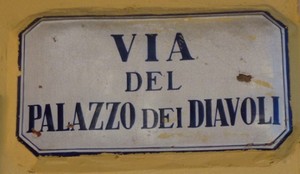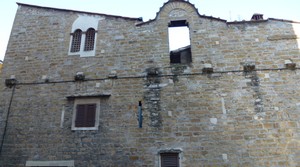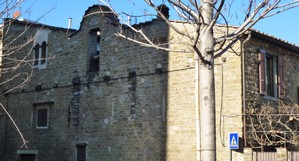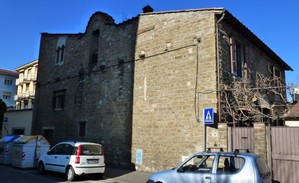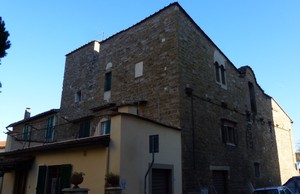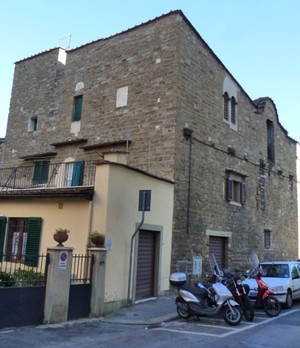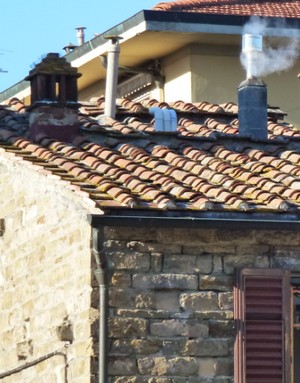Introduction
Many years ago Sylvia Mann encouraged me to publish in The Playing-Card my studies on Italian cards. She labelled "New Discoveries" my whole series, and recommended to me not to leave any contribution unpublished in a drawer of my desk. As a supposedly convincing stimulation, she used to remind me that several of her friends had died just before bringing their useful results to the press. Understandably, I followed her advice in every case, with however one exception. In just a case I concluded that I had to accept the risk of disappearing before letting people know a maybe significant result of my research. It seems now that the world of card historians is fortunate enough to receive also this nth contribution of mine, because I am still alive and got ready to communicate it.
Where did such a long hesitation come from? Probably it derived from my education, based on humanities, and also on scientific subjects. With this kind of education, you have to base your reasoning, as far as possible, on concrete matters and reliable working hypotheses. This case is different: its basis is something similar to instinct, to belief, without any significant involvement of conscious, not to speak of scientific reasoning.
An additional justification for my delay in publishing this note I can attribute to nobody less an authority than Thierry Depaulis. During one of his rare visits at my address, I accompanied him in a short walk nearby to see… the object of this note. Somewhat contrary to my expectation, he showed no particular enthusiasm in front of this new "discovery". We ultimately agreed upon the fact that of similar cases one could find more than a dozen, even while remaining within Italy. As a more than logical consequence, this contribution remained in the drawer.
Now, a further quarter of century has passed, a whole generation. Meantime my age has abundantly reached the grandfather stage, and it is well known that grandfathers are sometimes allowed to behave in not-so-strictly reasonable ways… and here is thus my contribution.
Alberti Towers
The object of this note is the tarot card of the Tower: absolutely no possible involvement of other cards is taken into account; nor which may be the connection of this individual card with the other ones of the sequence. The only involvement for this "card" is that of Florence, but – whichever be the justification - my readers should already be accustomed to find this town mentioned here and there in my writings. Of course, if I suggest a possible Florentine origin for the tarot Tower, somebody else may extend this suggestion to the whole pack, and in about the same early time - this possibility does exist, but I personally will not repeat it here.
Let us therefore limit our attention to "my" Florentine tower. Actually, the tower in question is not mine it is an Alberti tower. The Alberti Tower in Florence is one of the finest of the town, with its unusual pentagonal section. With a few additional later parts (the terrace, and the porch) it can still be seen at the corner between Via dei Benci and Borgo Santa Croce.(1) Precisely in this tower, and in several buildings around it in the quarter of Santa Croce, between the Square and the Arno river, lived for centuries the several branches of the Alberti family. This is in the Eastern part of the town, and exactly from the mountains farther away (Alpe di Catenaia, in the same direction!) this family had its origin.
In the 14th century, the Alberti family had grown up to acquire a leading place in the town, but all male members of the family, older than 16 years, were banished in 1401 and only admitted again in Florence near the end of 1428. Branches of the family remained out of the town also later on and acquired reputation in Venice, in Greece, and in several more places. The best known of their offspring was certainly Leon Battista Alberti (1404-1472), who in his turn also has some possible connection with the history of tarot.
Of course, in the time of the banishment, their trades could not be so extraordinarily favourable as had been in the previous century. However, a substantial part of their riches could be kept, thanks to the female members of the family, together with several assistants that the family could entitle to trade on their behalf.(2) Other fortunes could be developed abroad, in the same time. It was only in the late 1430s, when they had again acquired their full citizenships, that the main fortunes of the family went to complete bankruptcy.
The above description may be considered as a second introduction, because I am not looking for the Alberti Tower mentioned, nor for the fortunes of the whole family, but just for one of their many estates, located outside of the city walls and strangely in the opposite direction with respect to the centre of the town, West instead of East.
Palazzo dei Diavoli, in general
The "tower" that I am searching information about is actually located in the Florentine suburb of Monticelli-Legnaia.(3) What has this house of the Alberti to do with the tarot sequence? There is a first and major connection: its name is Palazzo dei Diavoli, the Devils’ Palace. Never heard about it? Fortunately enough, this ancient Palazzo dei Diavoli is still there, and gives its name to the whole street in which it is situated.
If I input today "Palazzo dei Diavoli" in the Italian version of Wikipedia, what appears is a description of precisely the building that I am dealing with.(4) However, this is not a proof that Wikipedia is a complete and reliable source of information; on the contrary, this indicates a lack of further relevant information.
There are many buildings in Italy with associated a legendary presence of devils, and some of them have even acquired the name itself of Palazzo dei Diavoli. One of the best known examples is just outside Siena, in the direction of Florence. I was once surprised in even finding another Palazzo dei Diavoli in Florence itself: it had been erected not far from Porta San Niccolò, now near the beginning of Viale dei Colli; namely, a place that might have been easier to connect with the Alberti family.(5)
We have thus to consider the building in question as one among the various Palazzo dei Diavoli. In other words, we cannot speak of it as THE Palazzo dei Diavoli, intended as the only one in existence; this does not exclude however that this building may have something to do with the tarot Tower.
Of course, finding today the Palazzo dei Diavoli is not the same question as re-discovering it in the documents of the time, and we will follow both directions in our study.
1427 Catasto
That this building once belonged to the Alberti family can be found in books of local descriptions and guides.(2) In 1427 we had the first Catasto, a huge list of the Florentine families, each with its possessions, real estates, farms, funds, credits and debts, so that a general overview can be derived of the richness of anybody living in the town.
I have searched if Palazzo dei Diavoli was already present in the 1427 Catasto. The family inventory in the Archivio di Stato di Firenze (ASF) gives the possible family members reported in the following table.
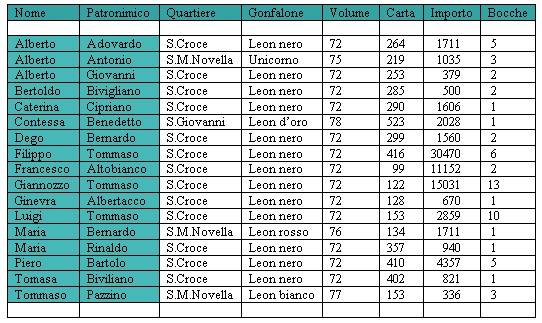
In the columns from left to right are indicated the name, father’s name, in which of the four quarters of the town they lived, and in which of its four (thus sixteen as a whole in the town) "gonfaloni"; then we find the volume of the Catasto and the leaf where the data are recorded. In the last but one column the total value of the riches is indicated and in the last column how many were the members of the family.
I could check the possessions of all of these families and verify that their estates were mostly located in the Santa Croce quarter or in the SSE parts out of the town, especially near Ripoli and Antella.
Our Palazzo dei Diavoli is however in the other direction, unusual for Alberti’s estates, but I could find the following data in correspondence with the possessions of Piero di Bartolo.
|
Una chasa <per> dabitazione da citadino rovinata e abandonata ce chiamaxi il palagio de diavolj. apreso a detta chasa sono tre poderi chon chasa da lavoratorj chon chorte e forno e altrj (dipositi?) appartenetti a dete chase, posti nel popolo di san piero a monticelgli allengnaia con istaiora cientoventicinque di terra o circha. chonfina a primo via, a ii° e iii° via, iiii° lodovicho di piero buona ventura el munistero di monticelgli a lingnaia. i detti tre poderi tiene afitto nicholo e domenicho di giovanni di dino e dee darne lanno di fitto lire duecentosettantasei, ….(6) |
We thus learn not only that it was precisely this branch of the family that owned "our" Palace, but we also find here the proof that the devils had already ruined their (of the Alberti and/or of the Devils?) palace.
Indeed, the building is described here as a "chasa da cittadino", a house for a citizen, not for an agricultural labourer. This beautiful house however is indicated as "ruined and abandoned"; the main reason why this building is indicated in the Catasto is that three farms were associated to it, which were still actively kept be a family of tenant farmers who provided to the Alberti family the given amount of rent money.
In the Catasto of 1431 the description is repeated with practically the same words, with the addition after "rovinata e abandonata" of a significant phrase: "e già tempo è che non si usò", and it is a (long) time that it has not been used. Moreover, in the place of the very uncertain word depositi we clearly read here after chorte: forno stalle e pozzo.(7)
Now, it is possible to find some further data on this branch of the family.
The owners
Piero di Bartolo (1354-1429), the owner of Palazzo dei Diavoli in 1427, belonged to a rather secondary branch of the family. They too had been banished in 1401 and only admitted again in Florence near the end of 1428, the year after the Catasto. His family was rather independent and had their main bases abroad and especially in Modena and London, where they still lived at the time of the first Catasto. They came back to Florence too, but Piero died in 1429 and its possessions went to his children Iacopo and Dainello, who also became the heirs of Albertaccio’s properties.
It may be worth noting, en passant, that it was then precisely the grandchild of Piero, Piero di Dainello, to obtain again a rich marriage in the 1460s with Ginevra di Piero de’ Pazzi, at a time in which all the other Alberti branches had already lost their previous power and riches.(8)
With respect to the data of 1427, our interest is obviously greater for the previous years than for the following ones. However, I could not find suitable documents for earlier times, dealing with the situation of Palazzo dei Diavoli before it was ruined.
The Palace and its name
I have not been able, in particular, to find any description of the appearance of the devils in the Palace, which probably led to the ruin of the building, and certainly to its name, which lasted for centuries. Several opinions and comments can be found in recent popular books and guides.(9)
One of the problems in reconstructing the tragic event that led to the ruin of the palace is that one has also to consider the possibility that no such event ever occurred. Some of the authors who have commented on the name actually suggest that it could just arise from the severe aspect of the building. The countrymen of the place could have named this palace as they did, just on the basis of its peculiar aspect and the unfinished state of the construction. (As know, it was much easier at the time to see devils at work here and there; people was even encouraged to see them, as well as angels and saints.)
Indeed some experts report that the erection of this building followed a rather common scheme: it is based on an ancient tower, not later than the 13th century, with small or no windows in the external walls; around it, new parts were added in the 14th century, transforming the old tower into a larger and more "modern" building.
It was indeed a common habit of the time to have a "casa da signori", where the family of the owners could live part of the year and control that the peasants worked their farms carefully enough. The "case da lavoratori" nearby could even be built with stones or bricks, but more usually at that time with wood or clay, and straw. (If you think that the Palazzo has much changed in the meantime, this is because you cannot see how much have changed these houses.)
Other "theories" exist for explaining the name of Palazzo dei Diavoli. One is based on the fact that the Alberti family once belonged to the Ghibellini fraction, enemies to the Pope. I also seem to remember having read somewhere that this was because Alberti were devoted to some divinatory practice and/or alchemic experiments, which might easily be considered welcome antecedents by all those tarot fans of nowadays.
I could not find however any serious report or discussion based on actual facts, and any theory still has a popular or legendary character. Sometimes it seems that we are confronting a legend that there was a legend about it.
The Palace today
I could not take photos of the building as suggestive as I wished. The best suggestion is to visit it in person, even if one should better be provided with suitable eyeglasses that allow one to see deeper towards the past centuries. The best alternative now is to suggest simply to enter the present address, Firenze, Via del Palazzo dei Diavoli 30, into Google maps, street view, and turning around the various points of view.
In any case, I understand that your imagination is asked to delete the neighbouring buildings, the cars parked in front of the house, and even the deposits of the civic cleansing department, but what better could you expect for a palace of the devils, with its life in private hands extended up to nowadays?
I am ready to bet that nobody among my readers is able to catch a glimpse of those devils, who are still entitled to own this palace of theirs. My hope is that somebody succeeds in "seeing" the present situation transformed into that of six centuries ago, when the same devils and their long flames surrounded the whole building. Maybe less effort is required to imagine that a few tranquil devils are still living inside: now, if you see a column of smoke over the roof, it is because they are cooking their lunch; if a parabolic antenna, it is because they have reorganised their means of control over the world, simply checking with TV.
Conclusion
As indicated above, I imagine here a possible involvement of Palazzo dei Diavoli with the triumphal card of the Tower. Clearly, I have to admit that - with respect to the common way - my reasoning advances in the contrary direction. As a matter of fact, it is not this palace-or-card that induces me to suppose a Florentine origin of the triumphs: the factual basis for such an indication would be too vague in this case, and does not prove anything for sure.
In the contrary direction, I feel it works instead satisfactorily: let us first admit that triumphs actually had their origin in Florence; after that, and therefore, even this Palazzo dei Diavoli could represent a useful subject for introducing one of the new cards.
The time in which the devils often came into sight is fortunately finished long ago. What I can witness in person is that the local situation has further changed during the last generation. If Thierry Depaulis could not see the devils in action when we walked together in Via del Palazzo dei Diavoli, because maybe they had been forced to slip a few metres below their Palace, I imagine that those poor devils have meantime been compelled to dig much farther downwards into the ground, in order to avoid the urban road traffic, including now the Batoni tram stage nearby.
I have now nothing to add. To anybody patient enough to having read the previous text, I am hesitating whether above and beyond my compliments for their endeavour I should also add my apologies for having pulled this residual contribution out of my drawer.
Footnotes:
(1) Italian Wikipedia: Torre degli Alberti / Italian Wikipedia: Alberti in Florence
(2) Susannah Kerr Foster, The ties that bind. Cornell University, 1988.
(3) Guido Carocci, I dintorni di Firenze. II. Galletti & Cocci, Firenze 1907. pp.393-394.
(4) Italian Wikipedia: Palazzo dei Diavoli
(5) Guido Carocci, op. cit., p.181.
(6) ASF, Catasto, 72, c.411r.
(7) ASF, Catasto, 355, c.489r.
(8) Luca Boschetto, Leon Battista Alberti e Firenze. Olschki, Firenze 2000.
(9) for ex. : Giampaolo Trotta. Monticelli. Alinea, Firenze c1987; Giampaolo Trotta, Legnaia, Cintoia e Soffiano. Messaggerie toscane, Firenze 1989; Bettino Gerini, Vivere Firenze… Il Quartiere 4. Aster Italia, Firenze 2004.
|
|

